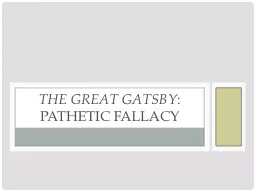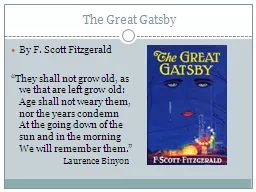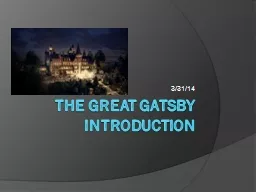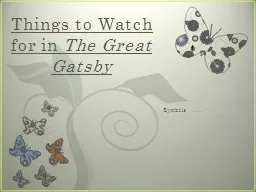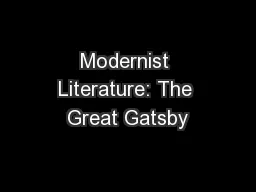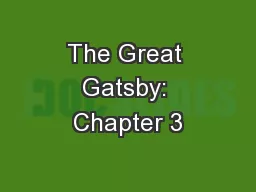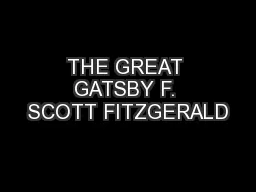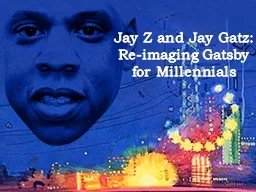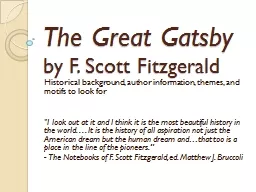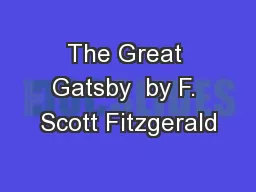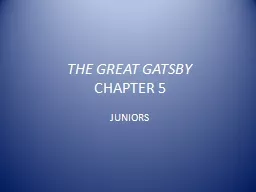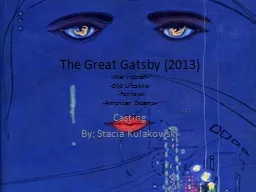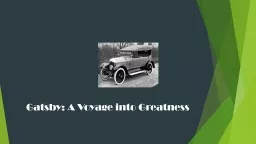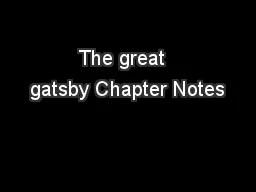PPT-The Great Gatsby
Author : alida-meadow | Published Date : 2016-06-14
Pathetic Fallacy Figurative Language Personification PERSONIFICATION When inanimate objects or ideas are given qualities as if they were alive It could also be
Presentation Embed Code
Download Presentation
Download Presentation The PPT/PDF document "The Great Gatsby" is the property of its rightful owner. Permission is granted to download and print the materials on this website for personal, non-commercial use only, and to display it on your personal computer provided you do not modify the materials and that you retain all copyright notices contained in the materials. By downloading content from our website, you accept the terms of this agreement.
The Great Gatsby: Transcript
Download Rules Of Document
"The Great Gatsby"The content belongs to its owner. You may download and print it for personal use, without modification, and keep all copyright notices. By downloading, you agree to these terms.
Related Documents

